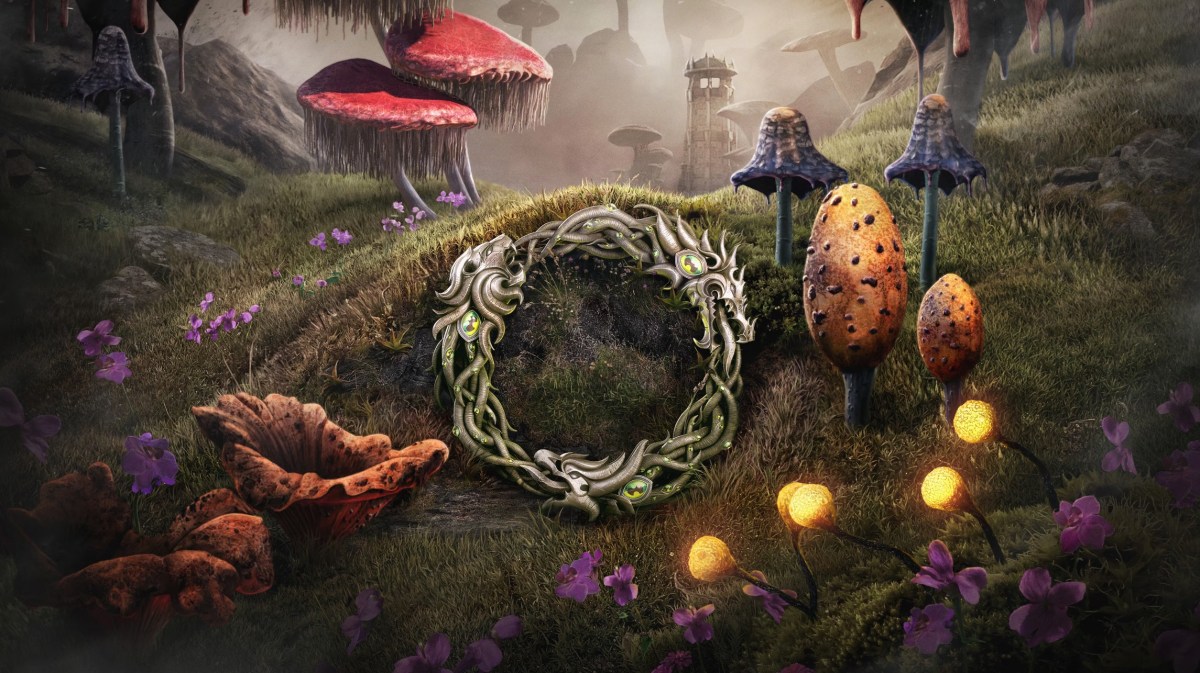The Elder Scrolls Online (ESO) creative director Rich Lambert has been working on the evolving MMORPG in some capacity since 2007 – and he’s not bored yet. Speaking to GamesHub ahead of tenth-anniversary celebrations for the title, he remained bright-eyed about what’s to come, and the long journey it’s taken to get here.
“I haven’t experienced [burnout] yet on The Elder Scrolls Online,” Lambert said. “But there are definitely other games that I’ve worked on in the past that are like, ‘when it’s done, it’s done’ and I never want to play them again … With ESO, for whatever reason, I still play it – I play it online, I play it with my friends … it’s just so fun … it kind of always stays fresh, which is nice.”
Celebrating a blockbuster era
When the Elder Scrolls Online first launched in 2014, it was a subscription-only game with a lukewarm reception. Players enjoyed its approach to lore and worldbuilding, but frequent criticism was lobbed at its level caps, cloistered exploration, and economic model. It was relaunched in 2015 with many of these concerns addressed, and in recent years, has risen to become one of the most consistently popular MMORPG experiences.
That’s largely thanks to its sense of freedom and adventure, an expanding array of rewarding worlds to explore, layers of new lore, multiplayer dungeon crawls, and dense, cinematic storytelling that has massively expanded the world of the game.
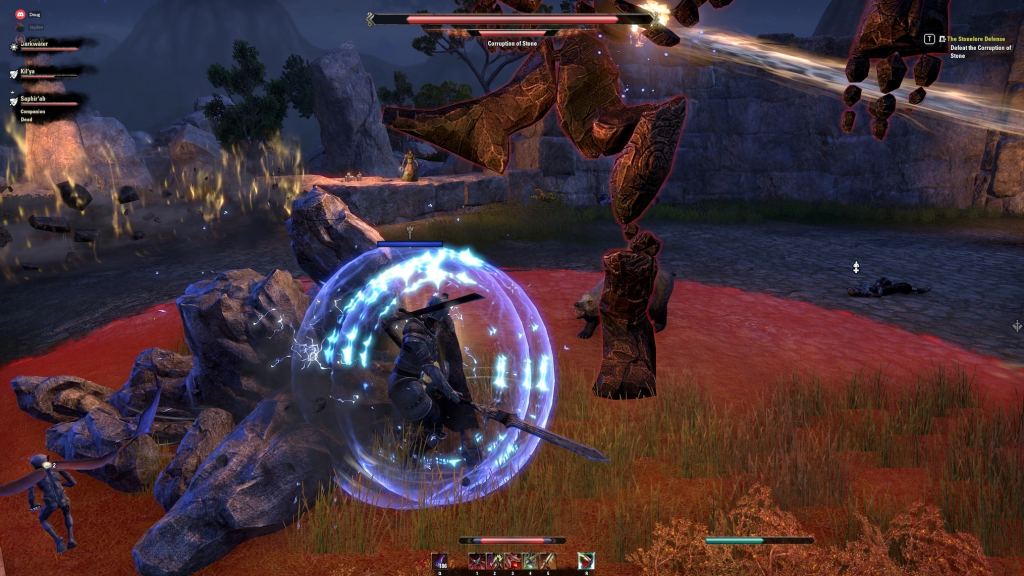
For the ZeniMax Online Studios team, it was likely difficult to see what The Elder Scrolls Online would look like, ten years down the track. Yet – here we are. In 2024, the team behind the long-running game will celebrate its tenth anniversary.
“[The ten year anniversary] is not only celebrating the game and the community, but the developers,” Lambert told GamesHub. “We put a lot of hard work into this. We still have a bunch of people that have been working on the game since 2007 … me included. That’s a big part of it. We want to try to celebrate that as well.”
For now, these celebrations are being kept under wraps – but Lambert has teased more news in November, with a “bunch of things” planned for the game and its blockbuster anniversary.
Read: The Elder Scrolls Online asks nothing of you, and that’s perfect
While it’s difficult to encapsulate the full scope of why players continue to flock to The Elder Scrolls Online, year after year, Lambert puts this success down to design choices, and the behaviours of its fan community.
“[It’s] the way we’ve built the world,” Lambert said. “Levels are important, because they’re power – but at the same time, they’re not, because you can go anywhere. Nothing is level-gated. Then, also, you can just play with your friends, and it doesn’t matter what level they are. You can be a brand new player, and they can be max level.”
This social aspect is something Lambert particularly enjoys, frequently heading to PAX and other community events to share his love for the game, and connect with like-minded players. “The reason you log in is to play with your friends,” Lambert said. “I really enjoy that aspect. I’ve always wanted to make a game, or be part of a game that could foster that kind of community.”
A good story comes first
Anyone can jump into The Elder Scrolls Online and experience gorgeous-looking worlds, dungeoneering, and monster battles – even if that occasionally means being carried through tough encounters. And while players can be content with exploring worlds and noting their unique arrays of flora and fauna, or just chatting with friends, there’s also a dense throughline of strong narrative beats in The Elder Scrolls Online.
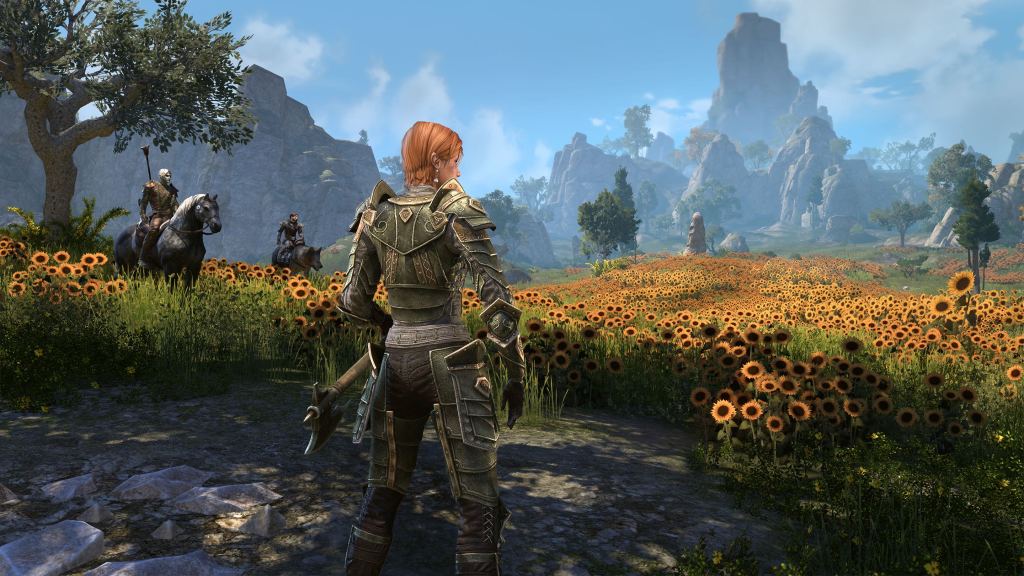
There are always mysteries to solve, quirky NPCs to meet, and conspiracies to unravel. According to Lambert, these storylines are a core priority for the ZeniMax team, which has consistently worked to create compelling plots to intrigue players, and keep them coming back for more Elder Scrolls goodness.
“A lot of it comes together when we start really digging in on the story, and how big the story is,” Lambert explained. “We generally don’t go into something and say, we’re going to tell this over the course of two or three years – generally, it’s ‘what is the story we want to tell?’ And then we start to work from there, and sometimes we have an idea of how big we want it to be – but a lot of times, that kind of shakes out.”
“So what we do, is we look at what we’ve done in the past, so that what we do in the future feels different. A lot that comes down to one word, that we talk about a lot – that sets the mood and tone of the story. So, for Elsweyr, [the one word] was ‘revenge’. Necrom has been ‘cosmic horror’, and High Isle was ‘Camelot’. When you say the word out loud, you get this picture in your head – and that helps set the tone. That helps a lot, in terms of making sure we’re telling unique stories, and going unique places.”
Read: The Elder Scrolls Online should live forever
From there, the ZeniMax narrative team – typically consisting of Lambert, a lead writer, a content director, and other contributors – work on outlines, and fleshing out each expansion’s themes. Not everything is planned out, but the narrative process usually involves creating a framework, and then charting the major beats, with this documentation then serving as a basis for other teams within ZeniMax to expand on.
Corralling lore and The Elder Scrolls 6
Within this process, consultation is an important step – particularly consultation with one of the most important contributors to the world of The Elder Scrolls: Michael Zenke, the current ESO Loremaster, who keeps stories, characters, and mythology in line. With another team within Bethesda currently working The Elder Scrolls – Elder Scrolls 6, to be precise – Zenke also helps to keep crossover and conflict minimal.
ESO operates on a distinct timeline, and while Lambert says the documentation isn’t always complete, there are still plenty of touchpoints, and millions of words on which to build – around 8 million words from in-game books alone, based on the localisation of the game. Between these lines, the ESO team is able to craft their own ideas, adding to a vast library for the franchise.
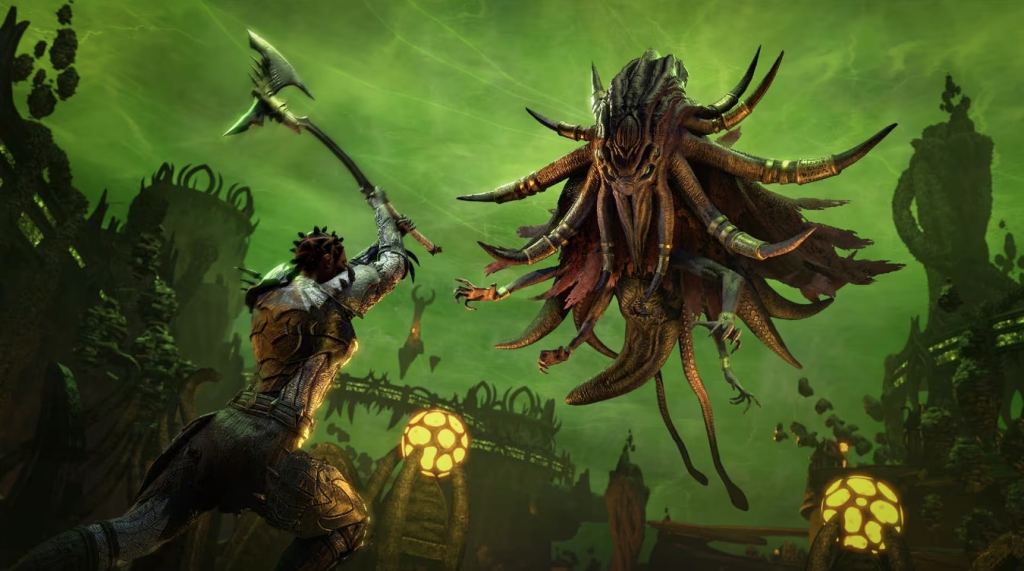
“Michael’s job is to make sure that the crazy that we come up with can fit, and stay within the Elder Scrolls universe,” Lambert said. “A lot the team are passionate about Elder Scrolls but there’s just so much to understand – so that’s his job. He does a lot of the writing for us, but his main focus is just keeping things on the rails. If we have a concern, he’s generally the guy that knows, or at least can interpret how it could or should fit in the lore.”
As for The Elder Scrolls 6, Lambert says that both teams are currently working “closely – because [they’re] still set in the same world, and the same universe” although they are “very separate teams.”
Consistent change
Beyond grappling with evolving lore, and keeping the action fresh for new and returning players, a consistent theme of the ongoing development of The Elder Scrolls Online is its constantly-changing nature. Over the last decade, the game has evolved dramatically – as has the live service space it occupies. For Lambert, the biggest changes he’s seen since the game launched have largely been tied to social features, as more games are now looking to engage players in online worlds.
“Games are trying to find more ways to add social ties – you know, more online games as a service,” Lambert said. “How do we get more players wanting to return to the game? I think that’s a big one. Obviously, the other big one is monetisation … and how the market is changing the traditional bricks-and-mortar to online – how does that work? How do you keep the lights on? That’s a big question, because it’s changing, and it’s constantly changing.”
According to Lambert, there’s also more iterative games in the market now, as everyone pulls good ideas from somewhere. Naturally, that has led to expansion within the online gaming space, and more competition overall. But Lambert isn’t particularly concerned about ESO‘s nearest rivals. The ZeniMax team is focussed on building out The Elder Scrolls Online with bigger and better content, rewarding loyal fans, and cementing bricks for the future.
“We focus a lot on continually updating the game, giving players reasons to want to come back and log in every day,” Lambert said. “We’ve been live for nine years. You know, when you do the math, that’s more than four [major updates] a year. We try to do that every quarter, put something meaty in front of players and give them a reason to come back, whether it be story content, or dungeon content, or quality of life improvements.”
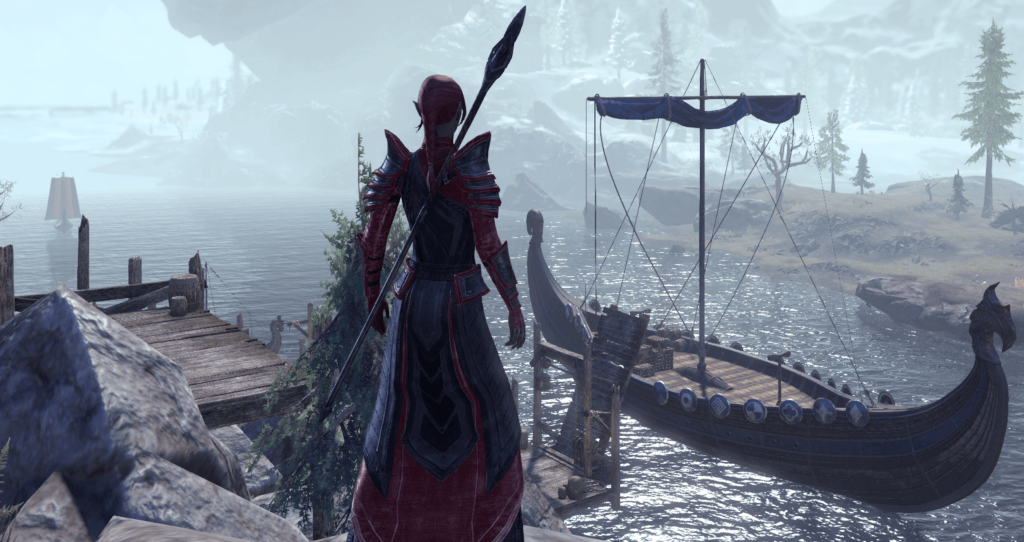
Even through the coronavirus pandemic, the team kept content consistent, providing new ways to connect through the game via developer livestreams, and shared online events. While shifting to work from home circumstances meant having to essentially re-learn game development and communication skills, the process made the team more agile, more efficient, and better prepared to weather the storm of the future.
“We had to relearn how to be collaborative again,” Lambert said. “You’d be amazed at just how many problems in game development get solved by sitting around the water cooler, or in the cafeteria eating lunch together, or just random five-minute conversations that are very, very hard to have when you’re all sitting at your desk.”
“It took us a while to get there – if you watched very closely to our release cadence and the quality of those releases over COVID, you can kind of see that the quality went down a little bit, there were more bugs, things were less stable. Then you could see that turn and get better and better. Necrom was the best chapter we’ve ever launched in terms of stability and the number of bugs … hopefully Update 40 [the next major update] is going to do the same thing.”
After a brief period of tumult, it now appears the ZeniMax team has righted the ship, just in time for ESO‘s upcoming anniversary. It speaks to the perseverance of the game’s development team, and its push to keep expanding the boundaries of ESO and The Elder Scrolls, forging a stronger path forward.
Per Lambert, the team is now working on next year’s major chapter, and content for the years ahead. Firm plans have been put in place for quarterly content in the years to come, with stories currently mapped out until at least 2026.
“There’s lots and lots of stuff planned for the future,” Lambert said. Fans can look forward to hearing more about the next steps for the ongoing game shortly.
